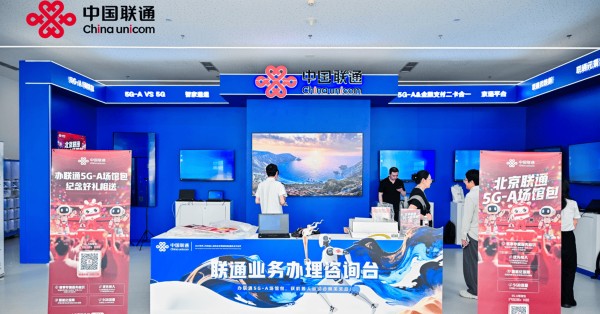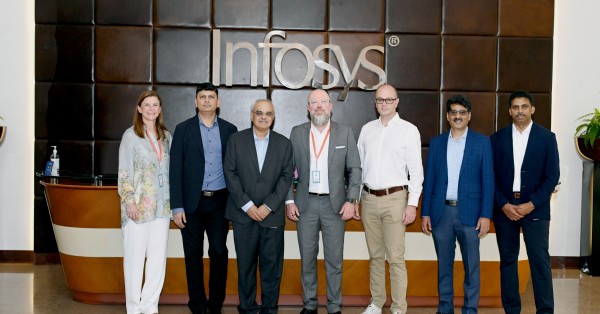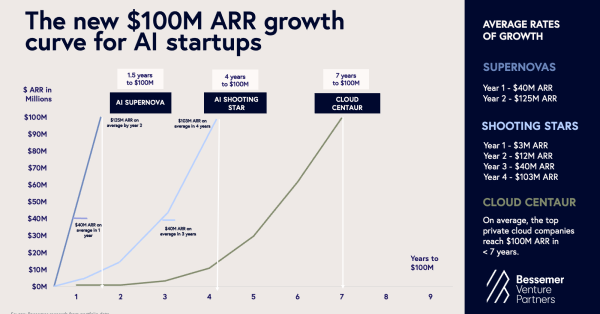The aviation industry is on the cusp of its next great leap forward. From landside traffic management to airside logistics, airports and airlines are embracing digital transformation as a powerful way to meet rising passenger volumes, complex operational demands, and tightening sustainability and safety goals. At the heart of this shift is connected aviation — an ecosystem powered by robust, private mobile networks that enable every asset, team, and process to work in harmony.
This article explores how private connectivity and the strategic role of service providers are shaping the next era of aviation. We’ll break down why connected aviation is about much more than better Wi-Fi; it’s about building smarter, more resilient airports and unlocking real business value for every stakeholder in the ecosystem.
Connected Aviation Backbone: Private Mobile Networks
For years, airports have struggled to bridge the gap between legacy communication systems and the demands of modern digital operations. Public Wi-Fi can’t handle the density or security requirements of mission-critical tasks. Legacy radio systems still serve some operational needs but lack the capacity and reliability for data-heavy, real-time use cases like streaming HD video from drones or supporting autonomous vehicles on the apron.
Enter private mobile networks — customized LTE or 5G networks that give airports full control over bandwidth, coverage, performance, and security. These networks use dedicated spectrum, meaning operations teams don’t have to compete with the unpredictable loads of public consumer networks. They can set quality-of-service rules, prioritize traffic for critical applications, and keep sensitive operational data inside the airport perimeter, meeting strict aviation security and compliance standards.
Crucially, private networks unlock the capacity needed for advanced IoT deployments. Imagine thousands of sensors tracking assets, monitoring environmental conditions, or guiding autonomous tugs, all communicating simultaneously without lag or dropped connections. And because airports can scale capacity as their needs evolve, private networks provide a future-ready backbone that grows alongside more complex use cases such as AI-powered digital twins, drone corridors, and real-time AR support for maintenance crews.
Enhancing Efficiency: Smoother Operations on Every Front
One of the most immediate benefits of connected aviation is operational efficiency — the lifeblood of an airport’s bottom line and an airline’s schedule performance. When every piece of equipment, vehicle, and operational team can share real-time data, even small time savings compound into huge cost savings.
Picture an apron with dozens of ground vehicles. Without connectivity, dispatchers rely on radio calls and manual logs to know which fuel truck is free, which baggage cart is closest, or whether a pushback tug is ready for its next assignment. With connected GSE (Ground Support Equipment), operations teams have live GPS and status feeds. Algorithms can automatically dispatch the nearest available unit, cutting wait times, reducing fuel burn, and slashing turnaround delays.
Inside terminals, connected kiosks, sensors, and cameras feed AI-driven queue management systems that predict bottlenecks and dynamically reassign staff or open extra lanes. Smart gates speed boarding with biometric checks that sync with airline manifests in real time. Baggage systems with RFID readers track every bag’s location and status through a connected dashboard, so passengers can get instant updates, and airlines can catch misrouted luggage before it becomes a customer complaint.
The combined result? Fewer delays, more on-time departures, reduced operational costs, and better on-time performance scores that boost airline loyalty and hub competitiveness.
Elevating Safety and Resilience
Connectivity does more than streamline logistics — it acts as a force multiplier for safety, compliance, and resilience in a sector where a single point of failure can cost millions. A connected airfield is better able to detect, respond to, and prevent safety hazards in real time.
For example, smart surveillance drones connected to a private network can patrol perimeters far faster and more thoroughly than manual patrols. They can stream live HD footage back to a central operations hub, trigger AI-based object detection to spot intruders, wildlife, or debris, and even collaborate in swarms for wider coverage during emergencies.
In harsh weather, connected runway and taxiway sensors monitor surface conditions such as ice, standing water, or debris. This data feeds directly into airside operations centers, which can reroute aircraft, deploy sweepers, or alert pilots instantly. Combined with vehicle-to-vehicle and vehicle-to-infrastructure communication, autonomous tugs, de-icing trucks, or inspection robots can safely coordinate without human error or delays.
Equally important, private mobile networks add a layer of operational resilience. When public cellular networks are overloaded — during large-scale events or emergencies — airports with their dedicated networks can maintain seamless, mission-critical communications and data exchange. This ensures continuity for emergency response teams, security operations, and airfield coordination no matter the circumstances.
Enriching the Passenger Experience
Travelers might never see the fiber cables under their feet or the antennas overhead, but they notice the results every step of the way. The passenger experience is where the real payoff of connected aviation becomes tangible and personal.
A seamless journey starts with touchless check-in, bag drop, and biometric identity checks — all supported by fast, secure data transfer between kiosks, gates, and airline systems. Instead of standing in lines, passengers move more freely through the airport, guided by real-time wayfinding and personalized notifications delivered over airport apps.
With connected baggage systems, passengers can track their bag’s journey just like a parcel, getting notifications when it’s loaded or delivered. In the terminal, location-based services and integrated loyalty apps let airports and retailers push personalized offers, directions, or gate change alerts.
Even disruptions become more manageable. When flights are delayed or gates shift, a connected ecosystem can automatically reroute passengers through less crowded zones, push new boarding passes to devices, and adjust cleaning or staffing schedules dynamically. All of this reduces stress, keeps passengers informed, and builds loyalty at a time when travelers expect digital convenience on par with any other part of their lives.
Service Providers: The Glue That Unites the Ecosystem
Rolling out this level of connectivity and intelligence is no small feat, and few airports can do it alone. Service providers are the glue that binds the vision to reality, bringing together spectrum licensing, network design, integration, security, and managed services in a single, scalable package.
Leading telecom and technology providers help airports map out connectivity roadmaps tailored to local conditions and traffic volumes. They design and deploy private LTE or 5G networks that integrate smoothly with legacy radio, Wi-Fi, and wired infrastructure. Beyond the physical network, service providers deliver managed services that monitor performance, patch vulnerabilities, and maintain compliance with stringent aviation standards.
Where the real value emerges is when providers help airports move up the stack — layering advanced applications like edge computing for low-latency processing, AI analytics for predictive maintenance, or digital twin platforms that model and optimize entire airside operations virtually.
For airports, this reduces complexity. Instead of juggling dozens of point solutions from niche vendors, they get an end-to-end solution with a single point of accountability. For service providers, this deep partnership creates long-term revenue streams and the chance to co-innovate new services that benefit airlines, regulators, retail tenants, and passengers alike.
Real-World Examples: Connected Aviation in Action
Around the globe, connected aviation is more than a buzzword — it’s real, operational, and delivering results. At London Heathrow, private 5G pilots have demonstrated how autonomous baggage vehicles can safely navigate crowded aprons, cutting manual cart runs and human workload. At Changi Airport, an integrated network connects smart cameras, IoT beacons, and biometric gates, allowing the airport to handle millions of passengers smoothly, even during peak travel surges.
In the Middle East, Dubai International Airport has gone further by integrating connected systems across security, retail, baggage handling, and customer engagement. With real-time AI dashboards, Dubai’s operations teams can predict passenger flows, adjust resource allocation on the fly, and deliver a highly personalized experience in one of the world’s busiest hubs.
In North America, airports like Dallas-Fort Worth and Los Angeles International are trialing connected digital twins — virtual replicas of physical assets updated live with IoT feeds. These tools let operators test new layouts, simulate weather disruptions, and train staff for emergencies without risking real-world operations.
These examples prove that connected aviation works — and that the payoff grows as use cases multiply and connect.
The Road Ahead: Turning Vision Into Value
Getting from pilot project to fully connected airport demands clear leadership and an executable roadmap. Airports that succeed follow a few common principles: start with a realistic connectivity baseline, plan for scale, and invest in integration from day one.
They align all stakeholders early — including airlines, regulators, local governments, and technology partners — to ensure data governance, security, and compliance are watertight. They pilot high-impact use cases like connected GSE or biometric boarding to build early wins and stakeholder buy-in. And they think beyond operations, exploring how connectivity can open new revenue streams — from premium passenger services to smarter retail and real-time advertising.
As the aviation industry’s needs grow more complex from advanced air mobility to AI-driven sustainability goals, the airports and airlines that get connectivity right today will lead tomorrow. Service providers will continue to play a critical role in supporting this transformation with future-ready, secure, and scalable solutions.
Connected Aviation: Ready for Takeoff
Connected aviation is here — not as a far-off concept but as a proven blueprint for smarter, safer, and more profitable airport operations. The question is no longer if airports should act, but how soon they can move from pilot to full-scale rollout.
Those who invest in robust private networks, strategic partnerships, and integrated solutions today will redefine the passenger experience, set new benchmarks for efficiency and safety, and unlock growth opportunities that carry the entire ecosystem higher.
The runway is clear. It’s time to power up, connect every piece of the journey, and take the future of aviation to new heights.
Explore More from the Connected Aviation Series
Continue your journey into the world of smart, connected airports with our in-depth Connected Aviation series:
-
Why Private Networks Are the Future of Smart Airports — Understand why dedicated connectivity is critical for modernizing airport operations, passenger experiences, and safety systems.
-
How IoT and Digital Transformation Power Smart Airports — Explore how sensors, real-time data, and integrated platforms drive operational efficiency from curb to gate.
-
How Autonomous Systems Are Automating Airports — Dive into the role of autonomous vehicles, robotics, and smart logistics in future-ready terminals.
-
Inside and Outside the Terminal: A Case Study — Get an insider look at how connected systems transform landside and airside operations for airports big and small.
-
Benefits of Private Networks and Smart Airports — See the real-world benefits of deploying robust, dedicated networks to enable scalable digital transformation.
Strengthen Your Connected Aviation Strategy
Get practical insights on deployment models, operational use cases, and how connected aviation enhances safety, sustainability, and passenger satisfaction. Align your roadmap with best practices for IoT integration, private 5G, autonomous systems, and digital platforms powering smart airports globally.
-
Access More Aviation Use Cases & Deployment Insights: Private Network Deployment & Use Cases
-
Discover Related Industry Innovations: Aviation & Connected Industries
-
Explore TeckNexus Solutions for Aviation & Beyond: TeckNexus Solutions































